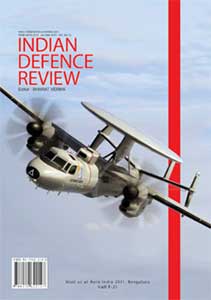Sir Henry McMahon never envisaged that the hurriedly conducted survey and his drawing of a thick red line on a map could trigger a war. The ‘massive attack’ supposedly planned by India cannot be taken seriously in view of the total lack of preparedness of the troops in terms of armament, ammunition, clothing and food supply. More than half of the casualties are said to have succumbed to the cold and the shortage of food. Some senior officers in the Army Headquarters in Delhi may have dreamt to ‘throw out the Chinese’ or take ‘the Thagla Ridge’, but in reality, it was a pipe dream only.
Soon 50 years will have passed since China entered the North East Frontier Agency (NEFA) and Ladakh. This event has so deeply traumatised India that the Sino-Indian conflict has remained a scar in the nation’s psyche, partly because we do not know what exactly happened.
Today, it is possible to get some hints of what took place from Indian official sources for example, the Official History of the 1962 War1 prepared by the Ministry of Defence and a number of White Papers published by the Ministry of External Affairs, as well as from memoirs of the main actors such as Brigadier John Dalvi, Major General Niranjan Prasad, Major General D.K. Palit or Lieutenant General B.M. Kaul and also from CIA,2 Russian and Chinese sources. However, the main Indian report prepared by Lieutenant General Henderson-Brooks and Brigadier (later Lieutenant General) Prem Bhagat is unfortunately still the most secret document of the Indian Republic.
Having lost any hope that the famous document will one day be declassified, I have tried to guess: “What on earth has stopped the Government to declassify the Report?”
Though portions of it were read out in the Parliament by the Defence Minister YB Chavan in 1963, the gist seems to be missing. A book helps us to understand the background of the Henderson-Brooks Report. Between 1962 and 1965, RD Pradhan was the Private Secretary of YB Chavan who, after the debacle of October 1962, took over as Defence Minister from the disgraced VK Krishna Menon.
Pradhan’s memoirs3, give some insights on the reasoning of the then Defence Minister: “For Chavan, the main challenge in the first years was to establish relationship of trust between himself and the Prime Minister. He succeeded in doing so by his deft-handling of the Henderson-Brooks’ Report of Inquiry into the NEFA4 reverses.”
The Private Secretary elaborated on the Defence Minister’s sentiments during the following months: “During the conduct of the enquiry Chavan was apprehensive that the committee may cast aspersions on the role of the Prime Minister or the Defence Minister.” Pradhan adds: “His [Chavan] main worry was to find ways to defend the government and at the same time to ensure that the morale of the armed forces was not further adversely affected. For that, he repeatedly emphasised in the Parliament that that the enquiry was a fact-finding one and to ‘learn lessons’ for the future and it was not a ‘witch-hunt’ to identify and to punish the officers responsible for the debacle.”
It is clear that Chavan’s main objective was to defend the government, in other words, ‘defend Nehru’ and the political coterie around him who were responsible for the death of nearly 2,000 Indian officers and jawans.
Chavan’s Secretary concludes: “It was a tribute to his sagacity and political maturity that he performed his role to the full satisfaction of the Parliament and also earned the gratitude of the Prime Minister.” He obviously managed to absolve Nehru of any wrong doing even though the Prime Minister was one, if not the main culprit.
In 2008, answering a question on the Report, Defence Minister AK Antony told the Indian Parliament that the Henderson-Brooks Report could not be made public because it was an internal study for the Indian Army and its contents, “were not only extremely sensitive, but are of current operational value.”
At first sight, it seems strange that this 49- year-old report is still of ‘operational value’. Was it a manual of what should NOT be done in case of a conflict with China or any other country? All the more reason to study it!
Were the officials who drafted the Minister’s reply aware of the other report, quoted earlier, the Official History of the Conflict with China (1962) prepared by the same Defence Ministry, detailing the famous ‘operations’ in 474 foolscap pages?
In 2005, under the Right to Information Act, veteran journalist and former MP Kuldip Nayar sought the following information: “May I request you to make me available a copy of the Report by the retired Lieutenant General Henderson-Brooks on the China-India War in 1962? This is now 43 years old and should have been formally available in the Archives of India, some 30 years after it was submitted to the Government of India.”5
The respondent, the Ministry of Defence, dragged its feet for months and tried to take refuge behind the Section 8(1). The stand of the Defence Ministry was explicitly given during a hearing of the Commission on March 07, 2009: “Disclosure of this information will amount to disclosure of the army’s operational strategy in the North-East and the discussion on deployments has a direct bearing on the question of the demarcation of the Line of Actual Control between India and China, a live issue under examination between the two countries at present.”
The fact that it has a “direct bearing on the question of the demarcation of the Line of Actual Control” may give us a hint in which direction to look to find an answer to our query. In a ‘decision notice’ dated March 19, 2010, the Central Information Commission said: “We have examined the report specifically in terms of its bearing on present national security. The disclosure of information of which the Henderson- Brooks report carries considerable detail on what precipitated the War of 1962 between India and China will seriously compromise both security and the relationship between India and China, thus having a bearing both on internal and external security. We have examined the report from the point of view of severability u/s 10(1). For reasons that we consider unwise to discuss in this Decision Notice, this Division Bench agrees that no part of the report might at this stage be disclosed.”
It seems strange as large parts had already been disclosed by the Defence Minister himself as well as by Neville Maxwell, the author of India’s China War6 who had the ‘privilege’ to access a copy of the Report from which he abundantly quoted in his book.
Looking for hints why the Henderson-Brooks report has never been released, the following sentence give some indications: “There is no doubt that the issue of the India-China Border, particularly along the North East parts of India, is still a live issue with ongoing negotiations between the two countries on this matter.” It is perhaps where one needs to look.
What the Chinese Say…
Another clue is that China has always said that it is India which attacked first. According to Chinese historians, who wrote the history of the 1962 Conflict, a first key meeting was held in early October 1962 (probably on October 06) in Beijing.
Defence Minister and Deputy Central Military Commission Chairman, Lin Biao reported on the situation in the Tibet and the Xinjiang Military Regions. Lin said that the Indians continue to ‘advance’ and often open fire on Chinese outposts. Chinese military intelligence had correctly gathered that the Indian forces were planning an attack on Thagla Ridge on October 10, 1962.7
| Editor’s Pick |
Mao told his colleagues: “It seems like armed coexistence won’t work. It is just as we expected. Nehru really wants to use force. This isn’t strange. He has always wanted to seize Aksai Chin and Thagla Ridge. He thinks he can get everything he desires.” The Great Helmsman continued: “…Since Nehru sticks his head out and insists on us fighting him, for us not to fight with him would not be proper. Courtesy emphasises reciprocity.”
Mao seems to have believed that India attacked first, though there was no question of the India Army ‘attacking China’ with no food, no clothes, no armament or ammunition supply, the Chinese perceived the situation differently. Was the Communist leadership just looking for a pretext? Probably, but what could be this pretext?
Why did China really believe that India attacked?
 The answer is to be found in the books written by the Army officers, who have been the unwilling actors in the ‘blunder’, namely Major General Niranjan Prasad, GOC, 4 Infantry Division, Brigadier John Dalvi, Commander, 7 Infantry Brigade and Brigadier DK Palit, then Director, Military Operations at the Army Headquarters in Delhi. Niranjan Prasad in his book The Fall of Towang8 explains why he decided to write his memoirs: “…to remove some of the misconceptions regarding that operation.” The version of Niranjan Prasad is important as he was the link between the ‘bosses’ in Delhi (often dictating orders to lower subordinates from the Army HQ) and the troops struggling on an undefendable ground in the NEFA. Having suffered the humiliation of the defeat, he does not have to spare the real culprits, the politicians.
The answer is to be found in the books written by the Army officers, who have been the unwilling actors in the ‘blunder’, namely Major General Niranjan Prasad, GOC, 4 Infantry Division, Brigadier John Dalvi, Commander, 7 Infantry Brigade and Brigadier DK Palit, then Director, Military Operations at the Army Headquarters in Delhi. Niranjan Prasad in his book The Fall of Towang8 explains why he decided to write his memoirs: “…to remove some of the misconceptions regarding that operation.” The version of Niranjan Prasad is important as he was the link between the ‘bosses’ in Delhi (often dictating orders to lower subordinates from the Army HQ) and the troops struggling on an undefendable ground in the NEFA. Having suffered the humiliation of the defeat, he does not have to spare the real culprits, the politicians.





attict http://paydayloanse.loan